- 1Unity中镜子面片_cameraspaceplane
- 2QtPropertyBrowser的安装与配置(VS2012+Qt msvc2012)_c:\qt\5.15.2\src\qttools\src\shared\qtpropertybrow
- 3【Qt】QtIFW 安装包制作总结 -如何创建多组件的安装器_qt ifw
- 4python入门(五):函数(传递实参,返回值,传递列表,将函数存储在模块中)_利用返回值方式传递数据
- 5k8s通过yaml创建pod_Kubernetes根据yaml创建pod的时候8080访问被拒绝报错
- 6unity可以直接转h5吗_手动挡,可以四挡直接降一挡吗?
- 7数据分析中部分常用绘图库学习小结_auto_add_to_figure
- 8点击按钮,回到页面顶部的5种写法
- 9ffmpeg官方例程3学习-给视频播放加上声音
- 10稻草人总结之Image-Loader加载图片_imageloader 默认缩放比例
第七篇【传奇开心果系列】python的文本和语音相互转换库技术点案例示例:Sphinx自动电话系统(IVR)经典案例
赞
踩
传奇开心果博文系列
- 系列博文目录
- python的文本和语音相互转换库技术点案例示例系列
- 博文目录
- 前言
- 一、雏形示例代码
- 二、扩展思路介绍
- 三、Sphinx多语言支持示例代码
- 四、Sphinx和语音合成库集成示例代码
- 五、Sphinx语音识别前自然语言预处理示例代码
- 六、Sphinx语音识别自动电话系统多级菜单示例代码
- 七、Sphinx语音识别自动电话系统个性化交互示例代码
- 八、Sphinx语音识别自动电话系统错误处理和重试机制示例代码
- 九、Sphinx语音识别自动电话系统与客户关系管理(CRM)系统的集成示例代码
- 十、Sphinx语音识别自动电话系统的实时语音分析示例代码
- 十一、Sphinx语音识别自动电话系统呼叫路由和排队示例代码
- 十二、Sphinx语音识别自动电话系统用户反馈和评价示例代码
- 十三、归纳总结
系列博文目录
python的文本和语音相互转换库技术点案例示例系列
博文目录
前言

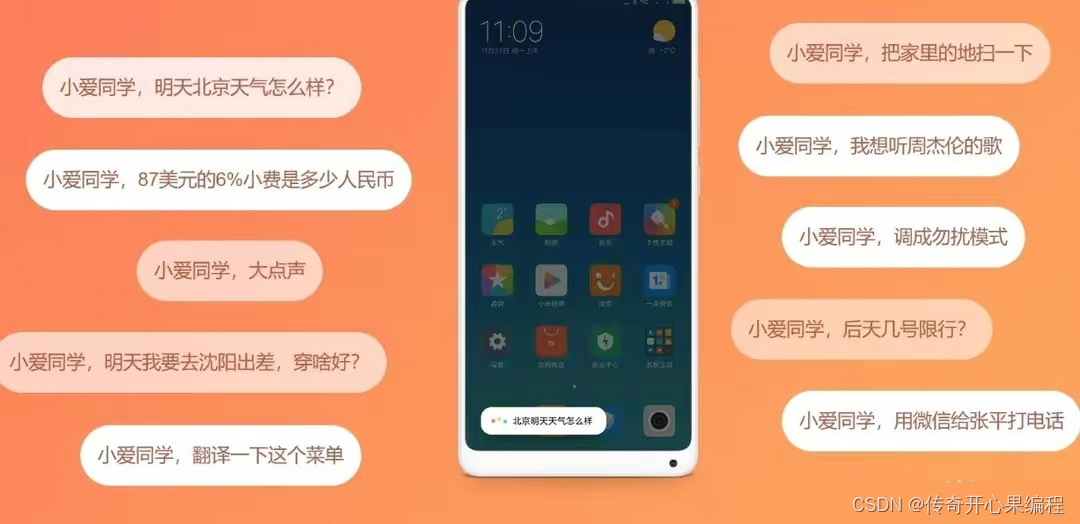
 自动电话系统(IVR):Sphinx可以用于构建自动电话系统,允许用户通过语音与系统进行交互。例如,用户可以通过语音输入来选择菜单选项、查询信息或执行特定操作。
自动电话系统(IVR):Sphinx可以用于构建自动电话系统,允许用户通过语音与系统进行交互。例如,用户可以通过语音输入来选择菜单选项、查询信息或执行特定操作。
一、雏形示例代码

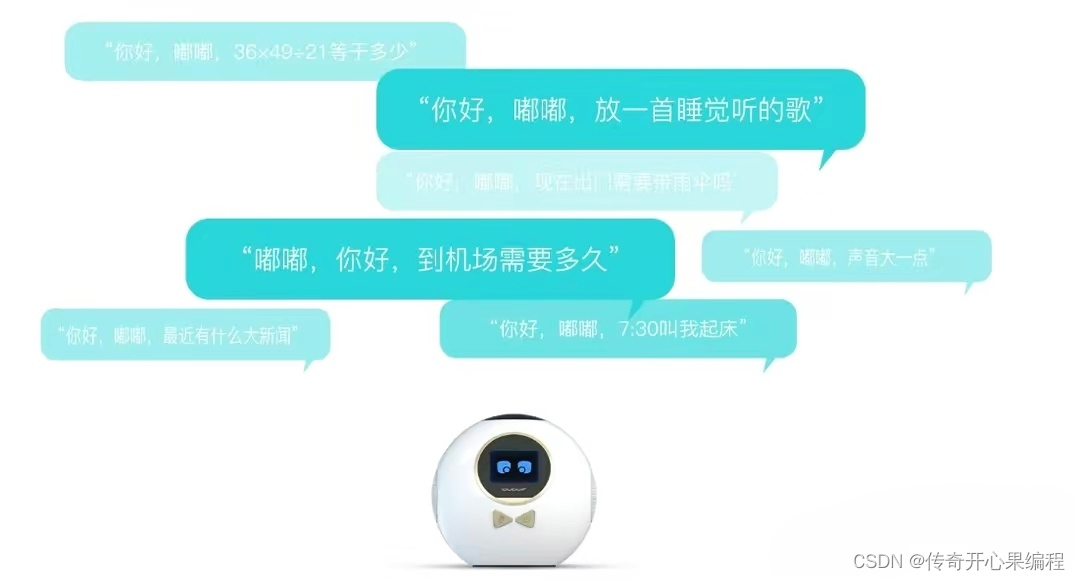 以下是使用Sphinx构建自动电话系统(IVR)的示例代码:
以下是使用Sphinx构建自动电话系统(IVR)的示例代码:
import speech_recognition as sr # 初始化语音识别器 r = sr.Recognizer() def listen_for_speech(): with sr.Microphone() as source: print("请说话...") audio = r.listen(source) try: # 使用Sphinx进行语音识别 text = r.recognize_sphinx(audio) return text except sr.UnknownValueError: print("抱歉,无法识别您的语音") except sr.RequestError as e: print("出现错误: {0}".format(e)) def process_speech(text): # 在这里处理语音输入并执行相应的操作 if "菜单" in text: print("选择菜单选项") elif "查询" in text: print("查询信息") elif "操作" in text: print("执行特定操作") else: print("无法理解您的请求") # 主循环 while True: speech = listen_for_speech() if speech: process_speech(speech)
- 1
- 2
- 3
- 4
- 5
- 6
- 7
- 8
- 9
- 10
- 11
- 12
- 13
- 14
- 15
- 16
- 17
- 18
- 19
- 20
- 21
- 22
- 23
- 24
- 25
- 26
- 27
- 28
- 29
- 30
- 31
- 32
- 33
- 34
- 35
这是一个简单的示例代码,用于演示如何使用Sphinx进行语音识别和处理用户的语音输入。在代码中,我们使用speech_recognition库来实现语音识别,并使用Sphinx作为识别引擎。
代码的主要部分是listen_for_speech函数,它使用麦克风监听用户的语音输入,并将其转换为文本。然后,process_speech函数根据用户的语音输入执行相应的操作。在示例中,我们简单地检查输入中是否包含特定关键词(例如"菜单"、“查询”、“操作”),并打印相应的操作。
请注意,此示例仅展示了如何使用Sphinx进行语音识别和处理简单的语音输入。实际的自动电话系统可能需要更复杂的逻辑和交互设计,以满足特定的需求。
二、扩展思路介绍
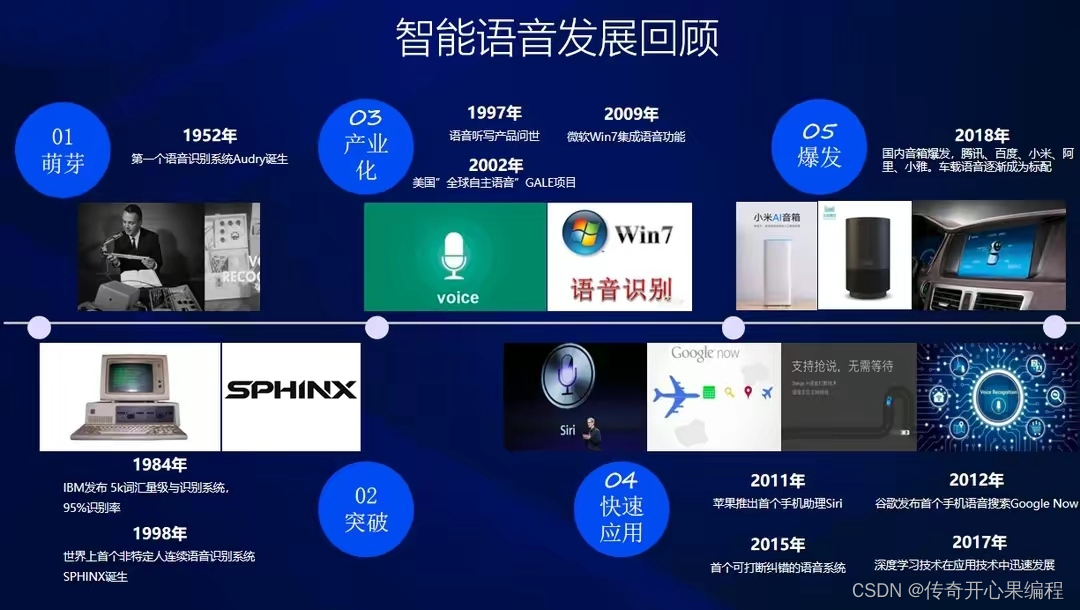
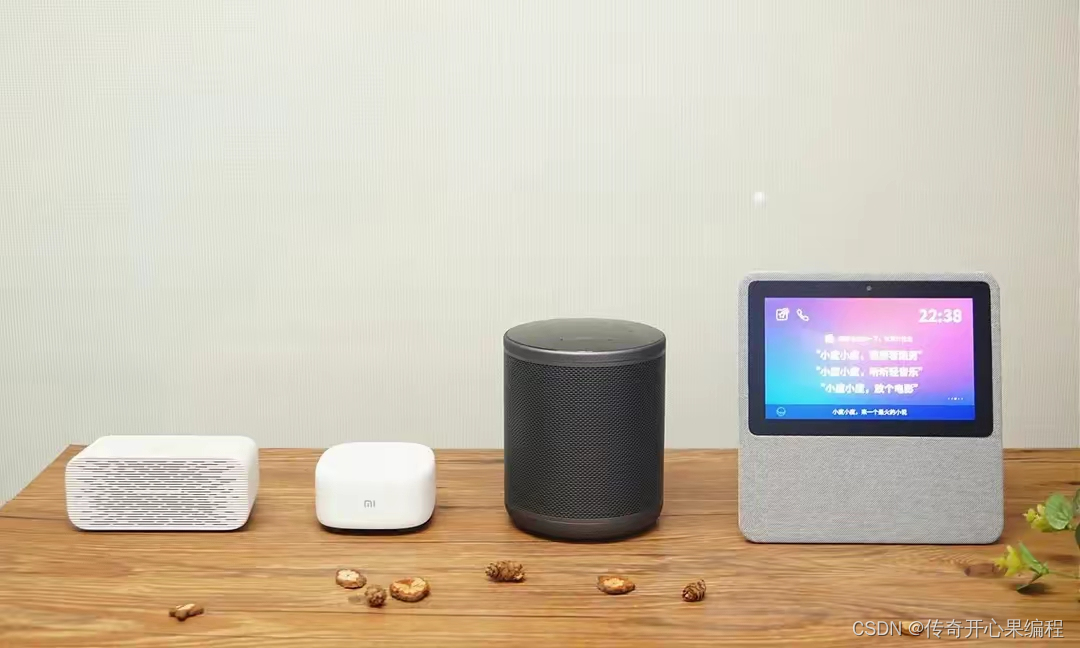 当构建自动电话系统(IVR)时,可以考虑以下扩展思路来增强系统的功能和用户体验:
当构建自动电话系统(IVR)时,可以考虑以下扩展思路来增强系统的功能和用户体验:
-
Sphinx多语言支持:通过集成多种语言模型和语音识别引擎,使系统能够支持多种语言的语音输入和输出。这样可以更好地满足不同语言用户的需求。
-
Sphinx与语音合成库集成:除了语音识别外,将语音合成引擎集成到系统中,使系统能够以语音形式回复用户。这样用户可以通过语音与系统进行交互,提升用户体验。
-
Sphinx语音识别前自然语言预处理(NLP):使用NLP技术对用户的语音输入进行处理和理解,以更准确地识别用户意图。通过构建意图识别和槽填充模型,系统可以更智能地回应用户的请求,并提供更准确的信息和服务。
-
Sphinx语音识别自动电话系统多级菜单:如果系统具有复杂的功能和选项,可以设计多级菜单结构,使用户能够通过语音输入选择不同的菜单选项。这样可以提高系统的可用性和用户导航的效率。
-
Sphinx语音识别自动电话系统个性化交互:通过集成用户个人信息和历史记录,系统可以提供个性化的服务和建议。例如,根据用户的偏好和历史记录,推荐相关的产品或服务。
-
Sphinx语音识别自动电话系统错误处理和重试机制:在语音识别过程中,可能会出现识别错误或无法理解用户的语音输入。为了提高系统的容错性,可以实现错误处理和重试机制,例如提示用户重新输入或提供备选选项。
-
Sphinx语音识别自动电话系统集成外部系统和数据源:自动电话系统可以与其他系统和数据源进行集成,以提供更丰富的功能和信息。例如,与客户关系管理(CRM)系统集成,根据用户的身份和历史记录提供个性化的服务。
-
Sphinx语音识别自动电话系统实时语音分析:除了语音识别外,可以使用实时语音分析技术来分析用户的语音特征,如情感、语调和语速。这样可以更好地理解用户的情绪和意图,并提供相应的回应和支持。
-
Sphinx语音识别自动电话系统呼叫路由和排队:在多用户同时使用系统时,可以实现呼叫路由和排队机制,以确保用户能够按顺序获得服务。这样可以提高系统的可扩展性和服务质量。
-
Sphinx语音识别自动电话系统用户反馈和评价:为了改进系统和了解用户的满意度,可以设计用户反馈和评价机制。通过收集用户的意见和建议,系统可以不断优化和改进。
这些扩展思路可以根据具体的需求和场景进行选择和实现。通过结合多种技术和功能,可以构建更强大、智能和用户友好的自动电话系统。
三、Sphinx多语言支持示例代码

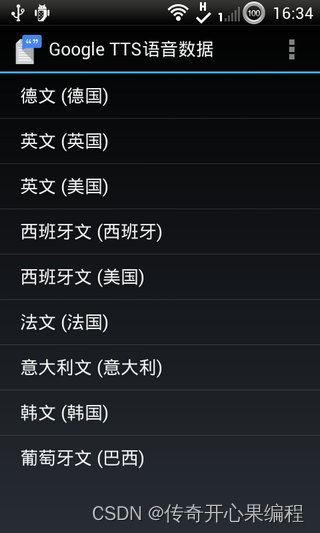 在使用Sphinx进行多语言支持时,你可以通过以下示例代码来实现:
在使用Sphinx进行多语言支持时,你可以通过以下示例代码来实现:
from pocketsphinx import LiveSpeech, get_model_path # 设置语言模型和字典路径 model_path = get_model_path() # 设置要支持的语言列表 supported_languages = ["en", "es", "fr"] # 支持的语言:英语、西班牙语、法语 # 初始化语音识别引擎 speech = LiveSpeech( verbose=False, sampling_rate=16000, buffer_size=2048, no_search=False, full_utt=False, hmm=os.path.join(model_path, "en-us"), lm=os.path.join(model_path, "en-us.lm.bin"), dic=os.path.join(model_path, "cmudict-en-us.dict"), ) # 循环接收用户语音输入并进行识别 for phrase in speech: # 获取识别结果 hypothesis = phrase.hypothesis() # 检查识别结果的语言是否在支持的语言列表中 if hypothesis.language in supported_languages: # 处理识别结果 print("识别结果:", hypothesis.hypstr) else: print("不支持的语言:", hypothesis.language)
- 1
- 2
- 3
- 4
- 5
- 6
- 7
- 8
- 9
- 10
- 11
- 12
- 13
- 14
- 15
- 16
- 17
- 18
- 19
- 20
- 21
- 22
- 23
- 24
- 25
- 26
- 27
- 28
- 29
- 30
- 31
上述示例代码使用了PocketSphinx库,该库是Sphinx的Python接口。你需要安装pocketsphinx库和Sphinx语言模型,可以使用pip进行安装。在示例代码中,我们设置了支持的语言列表为英语、西班牙语和法语,你可以根据你的需求修改这个列表。
请注意,这只是一个简单的示例代码,你可能需要根据你的具体需求进行更多的定制和配置。此外,你还需要准备相应的语言模型和字典文件来支持不同的语言。你可以从Sphinx官方网站下载已经训练好的语言模型和字典,或者自行训练定制的语言模型和字典。
另外,对于语音输出的多语言支持,你可以使用相应的文本转语音引擎,如Google Text-to-Speech、Microsoft Speech SDK等,根据识别结果生成对应语言的语音输出。具体的实现方式会依赖于你选择的文本转语音引擎。
四、Sphinx和语音合成库集成示例代码

 当使用Sphinx进行语音识别后,你可以将识别结果传递给语音合成库,以生成相应的语音回复。以下是一个示例代码,展示了如何将Sphinx和语音合成库(这里使用
当使用Sphinx进行语音识别后,你可以将识别结果传递给语音合成库,以生成相应的语音回复。以下是一个示例代码,展示了如何将Sphinx和语音合成库(这里使用pyttsx3)进行集成:
import speech_recognition as sr import pyttsx3 # 初始化语音识别引擎 r = sr.Recognizer() # 初始化语音合成引擎 engine = pyttsx3.init() # 设置要使用的语音合成声音 voices = engine.getProperty('voices') # 根据需要选择合适的声音 engine.setProperty('voice', voices[0].id) # 定义回复用户的函数 def reply_with_voice(message): # 使用语音合成引擎将文本转换为语音 engine.say(message) engine.runAndWait() # 录音并进行语音识别 with sr.Microphone() as source: print("请说话...") audio = r.listen(source) try: # 使用Sphinx进行语音识别 text = r.recognize_sphinx(audio) print("识别结果:", text) # 根据识别结果生成回复 if text == "你好": reply_with_voice("你好,很高兴与你交流。") else: reply_with_voice("抱歉,我没有理解你的意思。") except sr.UnknownValueError: print("无法识别语音") except sr.RequestError as e: print("请求语音识别服务出错:", str(e))
- 1
- 2
- 3
- 4
- 5
- 6
- 7
- 8
- 9
- 10
- 11
- 12
- 13
- 14
- 15
- 16
- 17
- 18
- 19
- 20
- 21
- 22
- 23
- 24
- 25
- 26
- 27
- 28
- 29
- 30
- 31
- 32
- 33
- 34
- 35
- 36
- 37
- 38
- 39
- 40
在上述示例代码中,我们首先初始化了语音识别引擎和语音合成引擎。然后,通过sr.Microphone()创建一个麦克风对象,用于录制用户的语音输入。接着,我们使用Sphinx进行语音识别,将识别结果存储在text变量中。
根据识别结果,我们通过调用reply_with_voice函数生成相应的语音回复。在这个示例中,如果识别结果是"你好",则回复"你好,很高兴与你交流。",否则回复"抱歉,我没有理解你的意思。"。
请注意,示例代码中使用的是speech_recognition库进行语音识别,你也可以选择其他的语音识别库,如Google Cloud Speech-to-Text、Microsoft Azure Speech等,具体的实现方式会依赖于你选择的库。同样地,你可以根据需要进行适当的定制和配置,如选择合适的声音、调整语速、音量等。
这个示例代码只是一个简单的演示,你可以根据你的具体需求进行更多的定制和扩展。
五、Sphinx语音识别前自然语言预处理示例代码

 要在Sphinx语音识别之前使用NLP技术进行预处理,你可以使用自然语言处理库(如NLTK、SpaCy、Transformers等)来构建意图识别和槽填充模型。以下是一个示例代码,展示了如何使用NLTK库进行简单的意图识别和槽填充:
要在Sphinx语音识别之前使用NLP技术进行预处理,你可以使用自然语言处理库(如NLTK、SpaCy、Transformers等)来构建意图识别和槽填充模型。以下是一个示例代码,展示了如何使用NLTK库进行简单的意图识别和槽填充:
import speech_recognition as sr import nltk from nltk.tokenize import word_tokenize from nltk.corpus import stopwords # 初始化语音识别引擎 r = sr.Recognizer() # 初始化NLTK nltk.download('punkt') nltk.download('stopwords') # 定义意图识别和槽填充函数 def process_input(input_text): # 分词 tokens = word_tokenize(input_text) # 去除停用词 stop_words = set(stopwords.words('english')) filtered_tokens = [token for token in tokens if token.lower() not in stop_words] # 意图识别 intent = None if 'weather' in filtered_tokens: intent = 'weather' elif 'news' in filtered_tokens: intent = 'news' # 槽填充 slots = {} if 'city' in filtered_tokens: city_index = filtered_tokens.index('city') if city_index + 1 < len(filtered_tokens): slots['city'] = filtered_tokens[city_index + 1] return intent, slots # 录音并进行语音识别 with sr.Microphone() as source: print("请说话...") audio = r.listen(source) try: # 使用Sphinx进行语音识别 text = r.recognize_sphinx(audio) print("识别结果:", text) # 进行意图识别和槽填充 intent, slots = process_input(text) print("意图:", intent) print("槽:", slots) # 根据意图和槽生成回复 if intent == 'weather': if 'city' in slots: city = slots['city'] reply = f"查询天气:{city}" else: reply = "请提供城市名称。" elif intent == 'news': reply = "正在获取最新新闻。" else: reply = "抱歉,我没有理解你的意思。" print("回复:", reply) except sr.UnknownValueError: print("无法识别语音") except sr.RequestError as e: print("请求语音识别服务出错:", str(e))
- 1
- 2
- 3
- 4
- 5
- 6
- 7
- 8
- 9
- 10
- 11
- 12
- 13
- 14
- 15
- 16
- 17
- 18
- 19
- 20
- 21
- 22
- 23
- 24
- 25
- 26
- 27
- 28
- 29
- 30
- 31
- 32
- 33
- 34
- 35
- 36
- 37
- 38
- 39
- 40
- 41
- 42
- 43
- 44
- 45
- 46
- 47
- 48
- 49
- 50
- 51
- 52
- 53
- 54
- 55
- 56
- 57
- 58
- 59
- 60
- 61
- 62
- 63
- 64
- 65
- 66
- 67
- 68
- 69
- 70
在上述示例代码中,我们首先初始化了语音识别引擎和NLTK库。然后,定义了一个process_input函数,用于对输入文本进行意图识别和槽填充。在这个示例中,我们使用NLTK库进行简单的分词和停用词去除,并根据关键词来判断意图和提取槽信息。
在录音并进行语音识别后,我们调用process_input函数对识别结果进行意图识别和槽填充。根据意图和槽信息,我们生成相应的回复。
请注意,这只是一个简单的示例,你可以根据你的具体需求使用更复杂的NLP技术和模型。例如,你可以使用更强大的NLP库(如SpaCy、Transformers等),使用预训练的语言模型进行意图识别和槽填充。你还可以根据需要进行适当的定制和扩展,以满足你的系统需求。
另外,你可以将这个NLP预处理过程与语音识别和语音合成的代码进行集成,以构建一个完整的语音交互系统。
六、Sphinx语音识别自动电话系统多级菜单示例代码
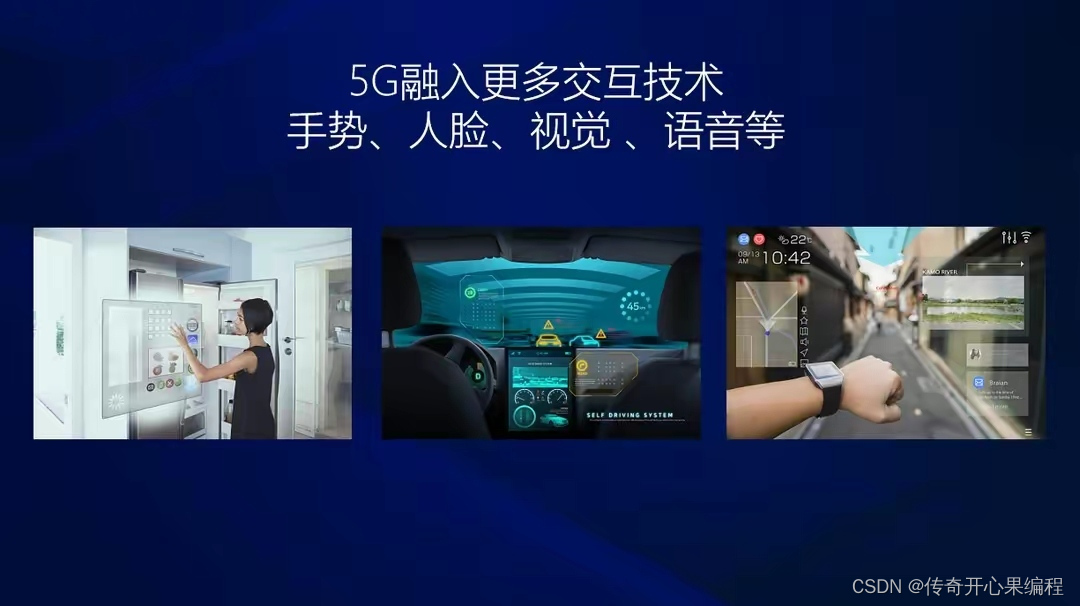 以下是一个示例代码,展示了如何使用Sphinx语音识别和槽填充来实现一个多级菜单的自动电话系统:
以下是一个示例代码,展示了如何使用Sphinx语音识别和槽填充来实现一个多级菜单的自动电话系统:
import speech_recognition as sr import nltk from nltk.tokenize import word_tokenize from nltk.corpus import stopwords # 初始化语音识别引擎 r = sr.Recognizer() # 初始化NLTK nltk.download('punkt') nltk.download('stopwords') # 定义意图识别和槽填充函数 def process_input(input_text): # 分词 tokens = word_tokenize(input_text) # 去除停用词 stop_words = set(stopwords.words('english')) filtered_tokens = [token for token in tokens if token.lower() not in stop_words] # 意图识别 intent = None if 'main' in filtered_tokens: intent = 'main_menu' elif 'products' in filtered_tokens: intent = 'products_menu' elif 'support' in filtered_tokens: intent = 'support_menu' elif 'exit' in filtered_tokens: intent = 'exit_menu' # 槽填充 slots = {} if 'option' in filtered_tokens: option_index = filtered_tokens.index('option') if option_index + 1 < len(filtered_tokens): slots['option'] = filtered_tokens[option_index + 1] return intent, slots # 定义菜单处理函数 def process_menu(intent, slots): if intent == 'main_menu': return "欢迎来到主菜单,请选择您想要的操作:产品菜单、支持菜单或退出。" elif intent == 'products_menu': return "这是产品菜单,请选择您想要的产品:产品A、产品B或返回主菜单。" elif intent == 'support_menu': return "这是支持菜单,请选择您需要的支持:技术支持、售后服务或返回主菜单。" elif intent == 'exit_menu': return "感谢您的使用,再见!" else: return "抱歉,我没有理解您的意思。" # 录音并进行语音识别 with sr.Microphone() as source: print("请说话...") audio = r.listen(source) try: # 使用Sphinx进行语音识别 text = r.recognize_sphinx(audio) print("识别结果:", text) # 进行意图识别和槽填充 intent, slots = process_input(text) print("意图:", intent) print("槽:", slots) # 处理菜单 menu_response = process_menu(intent, slots) print("回复:", menu_response) except sr.UnknownValueError: print("无法识别语音") except sr.RequestError as e: print("请求语音识别服务出错:", str(e))
- 1
- 2
- 3
- 4
- 5
- 6
- 7
- 8
- 9
- 10
- 11
- 12
- 13
- 14
- 15
- 16
- 17
- 18
- 19
- 20
- 21
- 22
- 23
- 24
- 25
- 26
- 27
- 28
- 29
- 30
- 31
- 32
- 33
- 34
- 35
- 36
- 37
- 38
- 39
- 40
- 41
- 42
- 43
- 44
- 45
- 46
- 47
- 48
- 49
- 50
- 51
- 52
- 53
- 54
- 55
- 56
- 57
- 58
- 59
- 60
- 61
- 62
- 63
- 64
- 65
- 66
- 67
- 68
- 69
- 70
- 71
- 72
- 73
- 74
- 75
- 76
- 77
在上述示例代码中,我们定义了一个process_input函数来进行意图识别和槽填充,根据关键词来判断用户的意图,并提取相关的槽信息。然后,我们定义了一个process_menu函数来根据意图和槽信息生成相应的菜单回复。
在录音并进行语音识别后,我们调用process_input函数对识别结果进行意图识别和槽填充。然后,我们调用process_menu函数来处理菜单,并生成相应的回复。
在这个示例中,我们假设用户可以说出关键词(如"main"、“products”、“support”、“exit”)来选择菜单选项,并使用"option"关键词后面跟随具体选项来选择子菜单选项。你可以根据你的实际需求进行适当的定制和扩展。
请注意,这只是一个简单的示例,你可以根据你的具体需求使用更复杂的NLP技术和模型进行意图识别和槽填充。你还可以根据需要进行适当的定制和扩展,以满足你的自动电话系统的需求。
七、Sphinx语音识别自动电话系统个性化交互示例代码

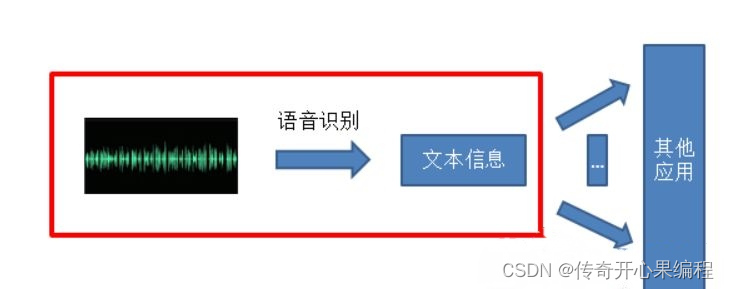 要实现一个能够根据用户个人信息和历史记录提供个性化服务和建议的自动电话系统,你需要将个人信息和历史记录与意图识别和槽填充的过程进行集成。以下是一个示例代码,展示了如何使用Sphinx语音识别和NLTK库来实现这个功能:
要实现一个能够根据用户个人信息和历史记录提供个性化服务和建议的自动电话系统,你需要将个人信息和历史记录与意图识别和槽填充的过程进行集成。以下是一个示例代码,展示了如何使用Sphinx语音识别和NLTK库来实现这个功能:
import speech_recognition as sr import nltk from nltk.tokenize import word_tokenize from nltk.corpus import stopwords # 初始化语音识别引擎 r = sr.Recognizer() # 初始化NLTK nltk.download('punkt') nltk.download('stopwords') # 用户个人信息和历史记录 user_profile = { 'name': 'John', 'age': 30, 'preferences': ['product A', 'service B'], 'history': ['product A', 'product C', 'service B'] } # 定义意图识别和槽填充函数 def process_input(input_text): # 分词 tokens = word_tokenize(input_text) # 去除停用词 stop_words = set(stopwords.words('english')) filtered_tokens = [token for token in tokens if token.lower() not in stop_words] # 意图识别 intent = None if 'recommend' in filtered_tokens: intent = 'recommendation' elif 'history' in filtered_tokens: intent = 'history' elif 'preferences' in filtered_tokens: intent = 'preferences' # 槽填充 slots = {} if 'product' in filtered_tokens: product_index = filtered_tokens.index('product') if product_index + 1 < len(filtered_tokens): slots['product'] = filtered_tokens[product_index + 1] return intent, slots # 定义个性化处理函数 def process_personalized(intent, slots): if intent == 'recommendation': if 'product' in slots: product = slots['product'] if product in user_profile['preferences']: return f"根据您的偏好,我推荐您尝试{product}。" else: return f"很抱歉,根据您的偏好,我无法为您推荐{product}。" else: return "请提供产品名称。" elif intent == 'history': return f"您的历史记录包括:{', '.join(user_profile['history'])}。" elif intent == 'preferences': return f"您的偏好包括:{', '.join(user_profile['preferences'])}。" else: return "抱歉,我没有理解您的意思。" # 录音并进行语音识别 with sr.Microphone() as source: print("请说话...") audio = r.listen(source) try: # 使用Sphinx进行语音识别 text = r.recognize_sphinx(audio) print("识别结果:", text) # 进行意图识别和槽填充 intent, slots = process_input(text) print("意图:", intent) print("槽:", slots) # 处理个性化请求 personalized_response = process_personalized(intent, slots) print("回复:", personalized_response) except sr.UnknownValueError: print("无法识别语音") except sr.RequestError as e: print("请求语音识别服务出错:", str(e))
- 1
- 2
- 3
- 4
- 5
- 6
- 7
- 8
- 9
- 10
- 11
- 12
- 13
- 14
- 15
- 16
- 17
- 18
- 19
- 20
- 21
- 22
- 23
- 24
- 25
- 26
- 27
- 28
- 29
- 30
- 31
- 32
- 33
- 34
- 35
- 36
- 37
- 38
- 39
- 40
- 41
- 42
- 43
- 44
- 45
- 46
- 47
- 48
- 49
- 50
- 51
- 52
- 53
- 54
- 55
- 56
- 57
- 58
- 59
- 60
- 61
- 62
- 63
- 64
- 65
- 66
- 67
- 68
- 69
- 70
- 71
- 72
- 73
- 74
- 75
- 76
- 77
- 78
- 79
- 80
- 81
- 82
- 83
- 84
- 85
- 86
- 87
- 88
在上述示例代码中,我们首先定义了一个user_profile字典,包含了用户的个人信息和历史记录。然后,我们定义了一个process_input函数来进行意图识别和槽填充,根据关键词来判断用户的意图,并提取相关的槽信息。接下来,我们定义了一个process_personalized函数来根据用户个人信息和意图槽信息生成个性化的回复。
在录音并进行语音识别后,我们调用process_input函数对识别结果进行意图识别和槽填充。然后,我们调用process_personalized函数来处理个性化请求,并生成相应的回复。
在这个示例中,我们假设用户可以说出关键词(如"recommend"、“history”、“preferences”)来请求个性化的服务和建议,并使用"product"关键词后面跟随具体产品来指定相关操作。根据用户的个人信息和历史记录,我们可以根据用户的偏好和历史记录来推荐相关的产品或服务,或者展示用户的历史记录和偏好。
请注意,这只是一个简单的示例,你可以根据你的具体需求使用更复杂的NLP技术和模型进行意图识别和槽填充。你还可以根据需要进行适当的定制和扩展,以满足你的自动电话系统的个性化交互需求。
八、Sphinx语音识别自动电话系统错误处理和重试机制示例代码
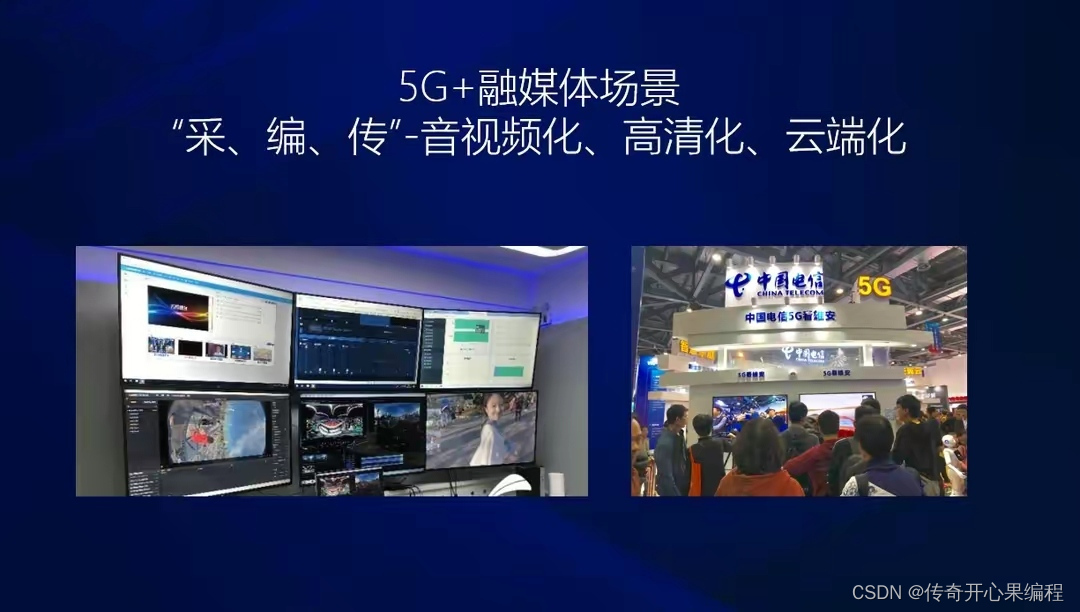
 要实现Sphinx语音识别自动电话系统的错误处理和重试机制,你可以在识别错误或无法理解用户语音输入时,提示用户重新输入或提供备选选项。以下是一个示例代码,展示了如何实现这个功能:
要实现Sphinx语音识别自动电话系统的错误处理和重试机制,你可以在识别错误或无法理解用户语音输入时,提示用户重新输入或提供备选选项。以下是一个示例代码,展示了如何实现这个功能:
import speech_recognition as sr import nltk from nltk.tokenize import word_tokenize from nltk.corpus import stopwords # 初始化语音识别引擎 r = sr.Recognizer() # 初始化NLTK nltk.download('punkt') nltk.download('stopwords') # 定义意图识别和槽填充函数 def process_input(input_text): # 分词 tokens = word_tokenize(input_text) # 去除停用词 stop_words = set(stopwords.words('english')) filtered_tokens = [token for token in tokens if token.lower() not in stop_words] # 意图识别 intent = None if 'recommend' in filtered_tokens: intent = 'recommendation' elif 'retry' in filtered_tokens: intent = 'retry' elif 'exit' in filtered_tokens: intent = 'exit' # 槽填充 slots = {} if 'product' in filtered_tokens: product_index = filtered_tokens.index('product') if product_index + 1 < len(filtered_tokens): slots['product'] = filtered_tokens[product_index + 1] return intent, slots # 录音并进行语音识别 def recognize_speech(): with sr.Microphone() as source: print("请说话...") audio = r.listen(source) try: # 使用Sphinx进行语音识别 text = r.recognize_sphinx(audio) print("识别结果:", text) # 进行意图识别和槽填充 intent, slots = process_input(text) print("意图:", intent) print("槽:", slots) return intent, slots except sr.UnknownValueError: print("无法识别语音") return 'retry', {} except sr.RequestError as e: print("请求语音识别服务出错:", str(e)) return 'retry', {} # 定义错误处理和重试机制 def handle_error(intent, slots): if intent == 'retry': print("抱歉,我没有理解您的意思,请重新说话。") return recognize_speech() elif intent == 'exit': print("感谢您的使用,再见!") return intent, slots else: print("抱歉,我没有理解您的意思。") return recognize_speech() # 主循环 def main_loop(): while True: intent, slots = recognize_speech() if intent == 'exit': break intent, slots = handle_error(intent, slots) # 处理其他意图 # ... # 启动主循环 main_loop()
- 1
- 2
- 3
- 4
- 5
- 6
- 7
- 8
- 9
- 10
- 11
- 12
- 13
- 14
- 15
- 16
- 17
- 18
- 19
- 20
- 21
- 22
- 23
- 24
- 25
- 26
- 27
- 28
- 29
- 30
- 31
- 32
- 33
- 34
- 35
- 36
- 37
- 38
- 39
- 40
- 41
- 42
- 43
- 44
- 45
- 46
- 47
- 48
- 49
- 50
- 51
- 52
- 53
- 54
- 55
- 56
- 57
- 58
- 59
- 60
- 61
- 62
- 63
- 64
- 65
- 66
- 67
- 68
- 69
- 70
- 71
- 72
- 73
- 74
- 75
- 76
- 77
- 78
- 79
- 80
- 81
- 82
- 83
- 84
- 85
- 86
- 87
- 88
- 89
在上述示例代码中,我们定义了一个recognize_speech函数,用于录音并进行语音识别。在识别错误或无法理解用户语音输入时,我们返回一个特定的意图(“retry”)来触发错误处理和重试机制。
在handle_error函数中,我们根据意图来处理错误情况。如果意图是"retry",我们会提示用户重新说话,并调用recognize_speech函数再次进行语音识别。如果意图是"exit",表示用户选择退出,我们会结束循环。对于其他意图,你可以根据实际需求进行相应的处理。
在主循环中,我们不断调用recognize_speech函数来进行语音识别,并根据返回的意图和槽信息进行处理。如果用户选择退出,则结束循环。
请注意,这只是一个简单的示例,你可以根据你的具体需求和业务逻辑进行适当的定制和扩展。你可以根据需要添加其他意图的处理逻辑,并进一步改进错误处理和重试机制,以提高系统的容错性和用户体验。
九、Sphinx语音识别自动电话系统与客户关系管理(CRM)系统的集成示例代码
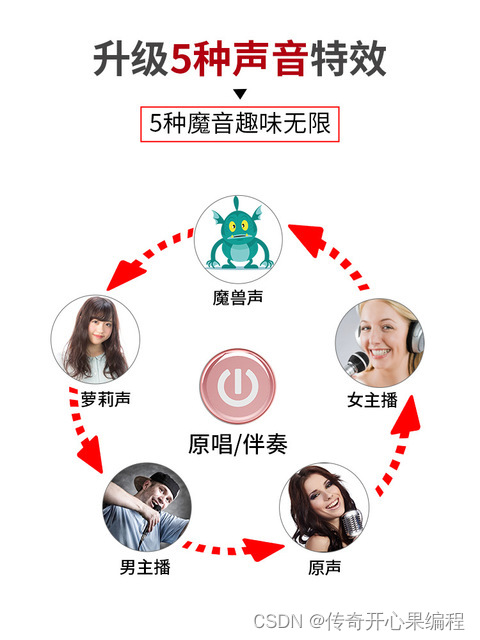
 要实现Sphinx语音识别自动电话系统与客户关系管理(CRM)系统的集成,你可以使用适当的CRM API来获取用户的身份和历史记录,并根据这些信息提供个性化的服务。以下是一个示例代码,展示了如何实现这个功能:
要实现Sphinx语音识别自动电话系统与客户关系管理(CRM)系统的集成,你可以使用适当的CRM API来获取用户的身份和历史记录,并根据这些信息提供个性化的服务。以下是一个示例代码,展示了如何实现这个功能:
import speech_recognition as sr import requests # 初始化语音识别引擎 r = sr.Recognizer() # CRM系统的API地址 crm_api_url = "https://your-crm-api-url.com" # 录音并进行语音识别 def recognize_speech(): with sr.Microphone() as source: print("请说话...") audio = r.listen(source) try: # 使用Sphinx进行语音识别 text = r.recognize_sphinx(audio) print("识别结果:", text) # 调用CRM API获取用户信息 user_info = get_user_info(text) print("用户信息:", user_info) # 根据用户信息提供个性化服务 provide_personalized_service(user_info) except sr.UnknownValueError: print("无法识别语音") except sr.RequestError as e: print("请求语音识别服务出错:", str(e)) # 调用CRM API获取用户信息 def get_user_info(text): # 发送请求到CRM系统的API response = requests.get(crm_api_url + "/user", params={"text": text}) # 解析API响应 if response.status_code == 200: user_info = response.json() return user_info else: print("获取用户信息失败:", response.text) return {} # 根据用户信息提供个性化服务 def provide_personalized_service(user_info): if "name" in user_info: print("欢迎您,", user_info["name"]) # 提供个性化服务 # ... # 主循环 def main_loop(): while True: recognize_speech() # 启动主循环 main_loop()
- 1
- 2
- 3
- 4
- 5
- 6
- 7
- 8
- 9
- 10
- 11
- 12
- 13
- 14
- 15
- 16
- 17
- 18
- 19
- 20
- 21
- 22
- 23
- 24
- 25
- 26
- 27
- 28
- 29
- 30
- 31
- 32
- 33
- 34
- 35
- 36
- 37
- 38
- 39
- 40
- 41
- 42
- 43
- 44
- 45
- 46
- 47
- 48
- 49
- 50
- 51
- 52
- 53
- 54
- 55
- 56
- 57
- 58
- 59
在上述示例代码中,我们定义了一个recognize_speech函数,用于录音并进行语音识别。在识别完成后,我们调用get_user_info函数来获取用户信息。该函数会发送一个HTTP GET请求到CRM系统的API,并传递识别结果作为参数。CRM系统的API会返回与用户相关的信息,例如用户的姓名、历史记录等。
然后,我们调用provide_personalized_service函数来提供个性化的服务。在这个函数中,你可以根据用户的信息和历史记录来实现相应的个性化逻辑。例如,根据用户的姓名进行欢迎,或者根据用户的历史记录提供相关的推荐或建议。
在主循环中,我们不断调用recognize_speech函数来进行语音识别和CRM集成。你可以根据实际需求和业务逻辑进行适当的定制和扩展。请确保在使用CRM API时,提供正确的API地址和参数,并处理API响应的错误情况。
需要注意的是,上述示例代码仅展示了与CRM系统的集成部分,你可能还需要根据具体需求实现其他功能,例如语音合成来提供回复或提示信息,或者与其他系统进行集成以获取更多的功能和信息。
十、Sphinx语音识别自动电话系统的实时语音分析示例代码
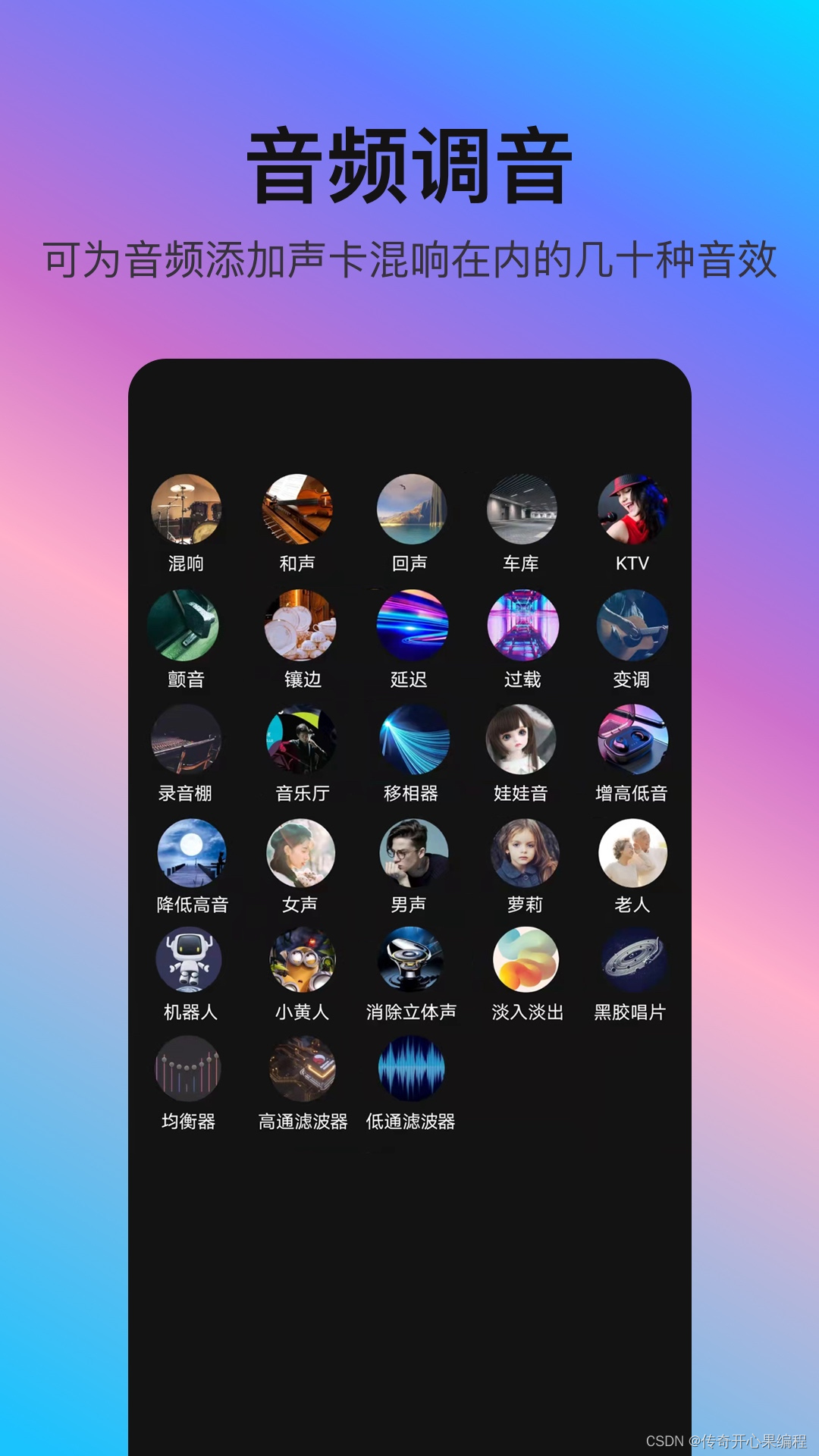
 要实现Sphinx语音识别自动电话系统的实时语音分析,你可以结合使用Sphinx和其他语音处理库,如pyAudioAnalysis,来提取用户的语音特征。以下是一个示例代码,演示了如何实现实时语音分析:
要实现Sphinx语音识别自动电话系统的实时语音分析,你可以结合使用Sphinx和其他语音处理库,如pyAudioAnalysis,来提取用户的语音特征。以下是一个示例代码,演示了如何实现实时语音分析:
import speech_recognition as sr from pyAudioAnalysis import audioBasicIO from pyAudioAnalysis import audioFeatureExtraction # 初始化语音识别引擎 r = sr.Recognizer() # 录音并进行实时语音分析 def analyze_speech(): with sr.Microphone() as source: print("请说话...") audio = r.listen(source) try: # 使用Sphinx进行语音识别 text = r.recognize_sphinx(audio) print("识别结果:", text) # 提取语音特征 features = extract_audio_features(audio) # 分析语音特征 analyze_audio_features(features) except sr.UnknownValueError: print("无法识别语音") except sr.RequestError as e: print("请求语音识别服务出错:", str(e)) # 提取语音特征 def extract_audio_features(audio): # 将语音转换为numpy数组 audio_data = audio.get_array_of_samples() audio_data = audio_data.astype(float) # 提取语音特征 [features, feature_names] = audioFeatureExtraction.stFeatureExtraction( audio_data, audio.sample_rate, 0.050 * audio.sample_rate, 0.025 * audio.sample_rate ) return features # 分析语音特征 def analyze_audio_features(features): # 在这里根据特征进行分析 # 可以使用机器学习模型、规则引擎等方法进行情感、语调和语速分析 # 根据分析结果提供相应的回应和支持 # 示例:打印语音特征 print("语音特征:") for i, feature in enumerate(features): print(f"{i+1}. {feature}") # 主循环 def main_loop(): while True: analyze_speech() # 启动主循环 main_loop()
- 1
- 2
- 3
- 4
- 5
- 6
- 7
- 8
- 9
- 10
- 11
- 12
- 13
- 14
- 15
- 16
- 17
- 18
- 19
- 20
- 21
- 22
- 23
- 24
- 25
- 26
- 27
- 28
- 29
- 30
- 31
- 32
- 33
- 34
- 35
- 36
- 37
- 38
- 39
- 40
- 41
- 42
- 43
- 44
- 45
- 46
- 47
- 48
- 49
- 50
- 51
- 52
- 53
- 54
- 55
- 56
- 57
- 58
- 59
- 60
在上述示例代码中,我们定义了一个analyze_speech函数,用于录音并进行实时语音分析。在函数中,我们使用Sphinx进行语音识别,并获取识别结果。然后,我们调用extract_audio_features函数来提取语音特征。该函数使用pyAudioAnalysis库来将语音转换为numpy数组,并提取特征。你可以根据需要选择适合的特征提取方法。
接下来,我们调用analyze_audio_features函数来分析语音特征。在这个函数中,你可以使用机器学习模型、规则引擎或其他方法来进行情感、语调和语速分析。根据分析结果,你可以提供相应的回应和支持,例如调整回答的语气、提供更好的服务或转接到专门的支持人员。
在主循环中,我们不断调用analyze_speech函数来进行实时语音分析。你可以根据实际需求和业务逻辑进行适当的定制和扩展。请确保在使用pyAudioAnalysis库时,按照库的文档提供正确的参数和处理方式。
需要注意的是,上述示例代码仅展示了实时语音分析的部分,你可能还需要根据具体需求实现其他功能,例如与CRM系统的集成、语音合成等。同时,实时语音分析可能需要较高的计算资源,你可能需要考虑优化和扩展的问题。
十一、Sphinx语音识别自动电话系统呼叫路由和排队示例代码
 要实现Sphinx语音识别自动电话系统的呼叫路由和排队机制,你可以使用一些队列数据结构和多线程编程来管理呼叫和服务的顺序。以下是一个示例代码,演示了如何实现呼叫路由和排队机制:
要实现Sphinx语音识别自动电话系统的呼叫路由和排队机制,你可以使用一些队列数据结构和多线程编程来管理呼叫和服务的顺序。以下是一个示例代码,演示了如何实现呼叫路由和排队机制:
import threading import queue import time # 定义呼叫队列 call_queue = queue.Queue() # 定义服务线程 class ServiceThread(threading.Thread): def __init__(self, name): threading.Thread.__init__(self) self.name = name def run(self): while True: # 从呼叫队列获取呼叫 call = call_queue.get() # 处理呼叫 process_call(call) # 标记呼叫完成 call_queue.task_done() # 处理呼叫 def process_call(call): # 在这里实现呼叫的具体处理逻辑 # 可以调用语音识别、语音分析、回答问题等功能 # 根据呼叫的特点和需求提供相应的服务 # 示例:打印呼叫信息 print(f"正在处理呼叫 {call}...") # 初始化服务线程 service_thread = ServiceThread("ServiceThread") service_thread.start() # 模拟呼叫 def simulate_call(): while True: # 模拟呼叫,生成一个随机的呼叫号码 call = "Call-" + str(time.time()) # 将呼叫加入队列 call_queue.put(call) # 打印呼叫信息 print(f"收到呼叫 {call}") # 模拟呼叫间隔 time.sleep(2) # 启动模拟呼叫 simulate_call()
- 1
- 2
- 3
- 4
- 5
- 6
- 7
- 8
- 9
- 10
- 11
- 12
- 13
- 14
- 15
- 16
- 17
- 18
- 19
- 20
- 21
- 22
- 23
- 24
- 25
- 26
- 27
- 28
- 29
- 30
- 31
- 32
- 33
- 34
- 35
- 36
- 37
- 38
- 39
- 40
- 41
- 42
- 43
- 44
- 45
- 46
- 47
- 48
- 49
- 50
- 51
- 52
- 53
- 54
在上述示例代码中,我们定义了一个call_queue队列,用于存储呼叫。然后,我们定义了一个ServiceThread类,继承自threading.Thread,用于处理呼叫。在ServiceThread的run方法中,我们使用一个无限循环来不断从呼叫队列中获取呼叫,并调用process_call函数来处理呼叫。
在process_call函数中,你可以实现具体的呼叫处理逻辑。例如,你可以调用语音识别、语音分析等功能来处理呼叫,并根据呼叫的特点和需求提供相应的服务。在示例中,我们只是简单地打印呼叫信息。
然后,我们初始化一个ServiceThread实例,并启动服务线程。接下来,我们定义了一个simulate_call函数,用于模拟呼叫。在函数中,我们使用一个无限循环来模拟不断收到呼叫,并将呼叫加入到呼叫队列中。在这里,你可以根据实际需求来生成呼叫号码和设置呼叫间隔。
最后,我们调用simulate_call函数来启动模拟呼叫。
需要注意的是,上述示例代码仅展示了呼叫路由和排队机制的部分,你可能还需要根据具体需求实现其他功能,例如呼叫转接、呼叫优先级等。同时,多线程编程需要考虑线程安全和同步的问题,你可能需要使用适当的锁或信号量来保证数据的一致性和线程的安全性。
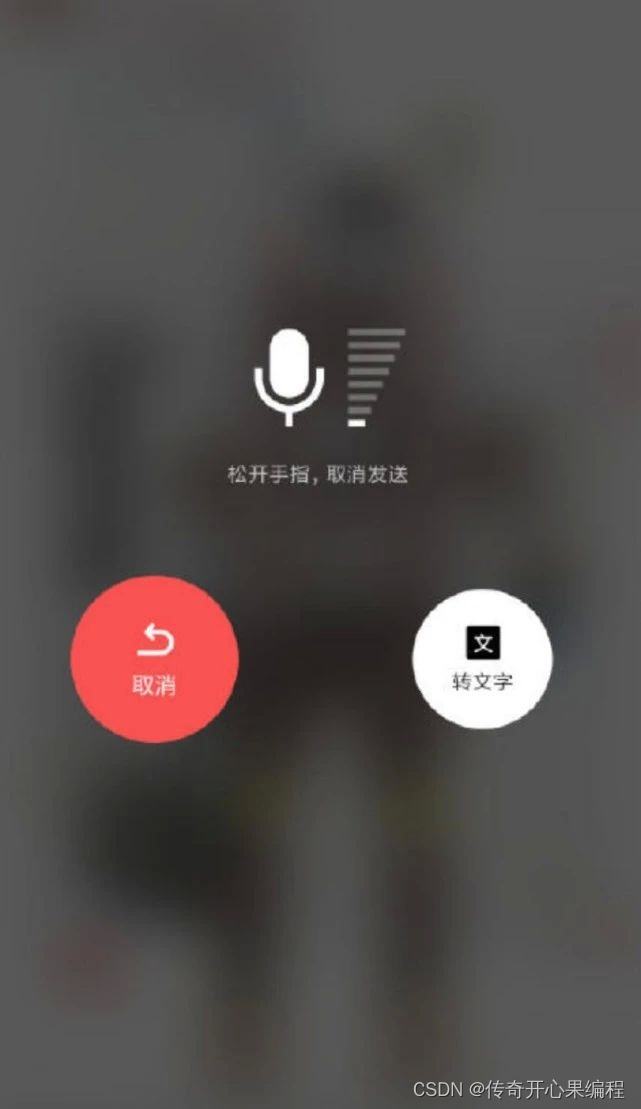
 要实现呼叫转接和呼叫优先级功能,并确保多线程编程的线程安全和同步,你可以使用适当的锁或信号量来保证数据的一致性和线程的安全性。以下是一个示例代码,演示了如何实现呼叫转接、呼叫优先级和线程安全:
要实现呼叫转接和呼叫优先级功能,并确保多线程编程的线程安全和同步,你可以使用适当的锁或信号量来保证数据的一致性和线程的安全性。以下是一个示例代码,演示了如何实现呼叫转接、呼叫优先级和线程安全:
import threading import queue import time # 定义呼叫队列 call_queue = queue.PriorityQueue() # 定义呼叫转接队列 transfer_queue = queue.Queue() # 定义锁 lock = threading.Lock() # 定义服务线程 class ServiceThread(threading.Thread): def __init__(self, name): threading.Thread.__init__(self) self.name = name def run(self): while True: # 从呼叫队列获取呼叫 lock.acquire() if not call_queue.empty(): priority, call = call_queue.get() lock.release() # 处理呼叫 process_call(call) # 标记呼叫完成 call_queue.task_done() else: lock.release() # 处理呼叫转接 if not transfer_queue.empty(): call = transfer_queue.get() process_call(call) transfer_queue.task_done() # 处理呼叫 def process_call(call): # 在这里实现呼叫的具体处理逻辑 # 可以调用语音识别、语音分析、回答问题等功能 # 根据呼叫的特点和需求提供相应的服务 # 示例:打印呼叫信息 print(f"正在处理呼叫 {call}...") # 初始化服务线程 service_thread = ServiceThread("ServiceThread") service_thread.start() # 模拟呼叫 def simulate_call(): while True: # 模拟呼叫,生成一个随机的呼叫号码 call = "Call-" + str(time.time()) # 模拟呼叫优先级,生成一个随机的优先级 priority = int(time.time() % 5) # 0-4 # 将呼叫加入队列 lock.acquire() call_queue.put((priority, call)) lock.release() # 打印呼叫信息 print(f"收到呼叫 {call},优先级 {priority}") # 模拟呼叫间隔 time.sleep(2) # 模拟呼叫转接 def simulate_transfer(): while True: # 从呼叫队列获取一个呼叫 lock.acquire() if not call_queue.empty(): priority, call = call_queue.get() lock.release() # 将呼叫加入转接队列 transfer_queue.put(call) # 打印转接信息 print(f"呼叫 {call} 被转接") else: lock.release() # 模拟转接间隔 time.sleep(5) # 启动模拟呼叫和呼叫转接 simulate_call_thread = threading.Thread(target=simulate_call) simulate_transfer_thread = threading.Thread(target=simulate_transfer) simulate_call_thread.start() simulate_transfer_thread.start()
- 1
- 2
- 3
- 4
- 5
- 6
- 7
- 8
- 9
- 10
- 11
- 12
- 13
- 14
- 15
- 16
- 17
- 18
- 19
- 20
- 21
- 22
- 23
- 24
- 25
- 26
- 27
- 28
- 29
- 30
- 31
- 32
- 33
- 34
- 35
- 36
- 37
- 38
- 39
- 40
- 41
- 42
- 43
- 44
- 45
- 46
- 47
- 48
- 49
- 50
- 51
- 52
- 53
- 54
- 55
- 56
- 57
- 58
- 59
- 60
- 61
- 62
- 63
- 64
- 65
- 66
- 67
- 68
- 69
- 70
- 71
- 72
- 73
- 74
- 75
- 76
- 77
- 78
- 79
- 80
- 81
- 82
- 83
- 84
- 85
- 86
- 87
- 88
- 89
- 90
- 91
- 92
- 93
- 94
- 95
- 96
- 97
- 98
- 99
- 100
在上述示例代码中,我们使用了PriorityQueue来实现呼叫队列,并使用Queue来实现呼叫转接队列。我们还引入了一个lock锁来保证对队列的访问是线程安全的。
在ServiceThread的run方法中,我们首先获取锁,并检查呼叫队列是否为空。如果不为空,则获取优先级最高的呼叫,并释放锁。然后,我们调用process_call函数来处理呼叫,并标记呼叫完成。如果呼叫队列为空,则释放锁。
在simulate_call函数中,我们模拟呼叫,并生成一个随机的呼叫优先级。然后,我们获取锁,将呼叫加入呼叫队列,并释放锁。
在simulate_transfer函数中,我们模拟呼叫转接。我们首先获取锁,并检查呼叫队列是否为空。如果不为空,则获取一个呼叫,并释放锁。然后,我们将呼叫加入转接队列。
最后,我们启动了两个线程,分别用于模拟呼叫和呼叫转接。
需要注意的是,上述示例代码仅展示了呼叫转接和呼叫优先级的部分,你可能还需要根据具体需求实现其他功能,例如呼叫策略、呼叫超时处理等。同时,多线程编程需要仔细考虑线程安全和同步的问题,确保对共享数据的访问是安全的。
十二、Sphinx语音识别自动电话系统用户反馈和评价示例代码
 要设计用户反馈和评价机制,收集用户的意见和建议,以便改进Sphinx语音识别自动电话系统,可以使用一个简单的反馈表单或调查问卷的方式。以下是一个示例代码,演示了如何设计用户反馈和评价机制:
要设计用户反馈和评价机制,收集用户的意见和建议,以便改进Sphinx语音识别自动电话系统,可以使用一个简单的反馈表单或调查问卷的方式。以下是一个示例代码,演示了如何设计用户反馈和评价机制:
import csv # 定义反馈文件路径 feedback_file = "feedback.csv" # 用户反馈函数 def collect_feedback(): print("感谢您使用我们的自动电话系统!") print("请回答以下问题以提供您的反馈和评价:") # 获取用户反馈信息 name = input("您的姓名:") email = input("您的电子邮件地址:") feedback = input("您的反馈和建议:") rating = int(input("请给系统打分(1-5):")) # 将反馈写入文件 with open(feedback_file, "a", newline="") as file: writer = csv.writer(file) writer.writerow([name, email, feedback, rating]) print("非常感谢您的反馈!") # 启动用户反馈收集 collect_feedback()
- 1
- 2
- 3
- 4
- 5
- 6
- 7
- 8
- 9
- 10
- 11
- 12
- 13
- 14
- 15
- 16
- 17
- 18
- 19
- 20
- 21
- 22
- 23
- 24
- 25
在上述示例代码中,我们首先定义了一个feedback_file变量,用于保存用户反馈的文件路径。你可以根据实际情况设置文件路径和文件名。
然后,我们定义了一个collect_feedback函数,用于收集用户的反馈和评价。在函数中,我们首先打印欢迎信息,并要求用户回答一些问题以提供反馈和评价。我们获取用户的姓名、电子邮件地址、反馈和建议,并要求用户给系统打分(1-5分)。
接下来,我们将用户的反馈信息写入到CSV文件中。我们使用Python的CSV模块来操作CSV文件。在这个示例中,我们将用户的姓名、电子邮件地址、反馈和评分作为一行写入CSV文件。
最后,我们打印感谢信息,表示感谢用户的反馈。
你可以根据实际需求扩展这个示例代码,例如添加更多的问题、验证用户输入的有效性、对用户反馈进行分析等。另外,你可能需要对文件操作进行异常处理,以确保文件的正常写入和读取。
收集到的用户反馈可以用于改进和优化Sphinx语音识别自动电话系统,了解用户的需求和痛点,并根据反馈进行相应的改进。
 以下是一个更新的示例代码,包括添加更多问题、验证用户输入的有效性、对用户反馈进行分析以及对文件操作进行异常处理的功能:
以下是一个更新的示例代码,包括添加更多问题、验证用户输入的有效性、对用户反馈进行分析以及对文件操作进行异常处理的功能:
import csv # 定义反馈文件路径 feedback_file = "feedback.csv" # 用户反馈函数 def collect_feedback(): print("感谢您使用我们的自动电话系统!") print("请回答以下问题以提供您的反馈和评价:") # 获取用户反馈信息 name = input("您的姓名:") email = input("您的电子邮件地址:") feedback = input("您的反馈和建议:") rating = get_rating() # 将反馈写入文件 try: with open(feedback_file, "a", newline="") as file: writer = csv.writer(file) writer.writerow([name, email, feedback, rating]) print("非常感谢您的反馈!") except Exception as e: print("写入反馈文件时出现错误:", str(e)) analyze_feedback() # 获取评分 def get_rating(): while True: try: rating = int(input("请给系统打分(1-5):")) if rating < 1 or rating > 5: print("评分必须在1到5之间,请重新输入。") else: return rating except ValueError: print("评分必须为整数,请重新输入。") # 分析用户反馈 def analyze_feedback(): try: with open(feedback_file, "r") as file: reader = csv.reader(file) next(reader) # 跳过标题行 ratings = [] for row in reader: ratings.append(int(row[3])) average_rating = sum(ratings) / len(ratings) print("系统的平均评分为:", average_rating) except Exception as e: print("读取反馈文件时出现错误:", str(e)) # 启动用户反馈收集 collect_feedback()
- 1
- 2
- 3
- 4
- 5
- 6
- 7
- 8
- 9
- 10
- 11
- 12
- 13
- 14
- 15
- 16
- 17
- 18
- 19
- 20
- 21
- 22
- 23
- 24
- 25
- 26
- 27
- 28
- 29
- 30
- 31
- 32
- 33
- 34
- 35
- 36
- 37
- 38
- 39
- 40
- 41
- 42
- 43
- 44
- 45
- 46
- 47
- 48
- 49
- 50
- 51
- 52
- 53
- 54
- 55
在这个更新的示例代码中,我们添加了一个get_rating函数,用于获取用户的评分。该函数使用一个循环来验证用户输入的评分是否有效,如果评分不在1到5之间或者不是整数,就会提示用户重新输入。
在collect_feedback函数中,我们调用了get_rating函数来获取用户的评分。如果用户输入的评分有效,就将用户的姓名、电子邮件地址、反馈和评分写入CSV文件中。我们还添加了对文件操作的异常处理,以确保文件的正常写入。
在analyze_feedback函数中,我们读取CSV文件,并分析用户的评分。我们计算了系统的平均评分,并打印出来。同样,我们也添加了对文件操作的异常处理,以确保文件的正常读取。
通过这些更新,我们增加了对用户输入的有效性验证,对用户反馈进行了简单的分析,并对文件操作进行了异常处理,以提高代码的健壮性和可靠性。
你可以根据实际需求进一步扩展这个示例代码,例如添加更多的问题、进行更复杂的用户反馈分析、保存更多的用户信息等。
十三、归纳总结
 Sphinx语音识别自动电话系统是一种基于Sphinx语音识别引擎的自动电话系统,它可以通过语音输入识别用户的指令或问题,并提供相应的响应或服务。以下是关于Sphinx语音识别自动电话系统的一些知识点归纳总结:
Sphinx语音识别自动电话系统是一种基于Sphinx语音识别引擎的自动电话系统,它可以通过语音输入识别用户的指令或问题,并提供相应的响应或服务。以下是关于Sphinx语音识别自动电话系统的一些知识点归纳总结:
-
Sphinx语音识别引擎:Sphinx是一种开源的语音识别引擎,可以将语音信号转换为文本。它支持离线语音识别,并且具有一定的准确性和可定制性。
-
自动电话系统:自动电话系统是一种用于处理来电并提供自动响应或服务的系统。它可以通过语音识别技术识别用户的语音输入,并根据预定义的规则或逻辑进行相应的处理。
-
呼叫路由:呼叫路由是指根据来电的特征或条件将呼叫转发到相应的处理单元或服务。在Sphinx语音识别自动电话系统中,呼叫路由可以根据用户的语音输入内容、关键词或其他特征来确定需要执行的操作或提供的服务。
-
排队机制:排队机制用于处理同时到达的多个呼叫,并按照一定的顺序进行处理。在Sphinx语音识别自动电话系统中,排队机制可以用于管理多个呼叫请求,确保每个呼叫按照先后顺序进行处理,避免呼叫丢失或混乱。
-
多线程编程:多线程编程是一种并发编程的方式,可以同时执行多个线程,提高系统的并发性和响应性。在Sphinx语音识别自动电话系统中,可以使用多线程来处理多个呼叫请求,实现并发处理和排队机制。
-
用户反馈和评价机制:用户反馈和评价机制用于收集用户对系统的意见、建议和评价,以便改进系统的性能和用户体验。可以设计一个反馈表单或调查问卷,收集用户的反馈信息,并进行分析和处理。
-
文件操作和异常处理:在Sphinx语音识别自动电话系统中,需要对文件进行操作来保存用户的反馈或其他数据。为了确保文件的正常读写,需要进行适当的异常处理,处理可能出现的文件读写错误或异常情况。
 这些知识点可以帮助你理解和设计Sphinx语音识别自动电话系统,实现呼叫路由、排队机制和用户反馈等功能。当然,还有其他方面的知识和技术可以进一步扩展和完善系统,如语音合成、语义理解、用户认证等。根据具体需求和情况,你可以进一步学习和探索相关的知识和技术。
这些知识点可以帮助你理解和设计Sphinx语音识别自动电话系统,实现呼叫路由、排队机制和用户反馈等功能。当然,还有其他方面的知识和技术可以进一步扩展和完善系统,如语音合成、语义理解、用户认证等。根据具体需求和情况,你可以进一步学习和探索相关的知识和技术。



